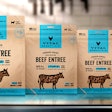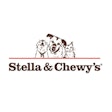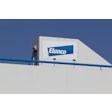
In 2020, pet ownership in the U.S. rose from 67% of households to an all-time high of 70%, wrote Steve King, president and CEO of the American Pet Products Association (APPA), in a preview of the association’s soon-to-be-released “2021-2022 APPA National Pet Owners Survey.”
“Pets have played a central role in comforting Americans during the COVID-19 pandemic,” King wrote in an article for Pet Business. That resulted in increased spending on pet food and supplies in 2020, he added; 35% of pet owners surveyed said they spent more on their pets in the previous 12 months than in the preceding year. Gen Z and millennial pet owners led the higher spending, with 49-50% reporting they had spent more on their pets.
As in the past few years, millennials comprised the largest segment of U.S. pet owners at 32%, up slightly from 31%, while the boomer and gen X owner segments both declined: from 29% to 27% and 26% to 24%, respectively. Presumably, gen Z owners grew their share; King’s article did not include that information.
Pet food wants: humanization, premiumization, sustainability
Spending on pet food increased about 11% for both dog and cat owners, according to the APPA survey, which also included questions about the factors’ affecting pet owners’ purchasing decisions. Nearly 50% of respondents said they prefer pet food and other pet products that consider humanization, premiumization and sustainability.
Specific to pet food, the survey indicated owner preferences for premium ingredients in addition to products, with 19% reporting they prefer non-GMO ingredients and 13% preferring human-grade ones. Other ingredients cited as important included novel proteins, superfoods, ancient-grains and plant-based foods. “Pet owners also reported their preference for food with environmentally friendly packaging (12:) and sustainably and humanely sourced ingredients (7%),” King wrote.
The annual APPA pet owners survey includes access to a new data portal that allows users to search and profile the data by demographics, behavioral information related to pet ownership, lifestyle, purchasing habits, purchasing preferences and dollar amount spent per product category.














